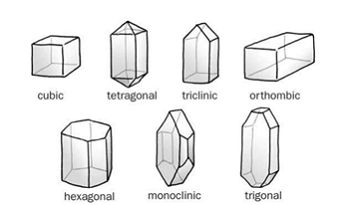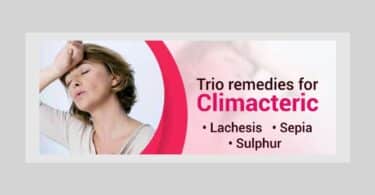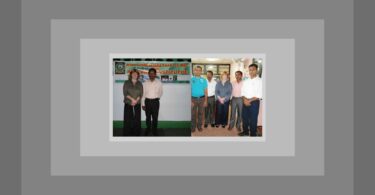At the beginning of February, Wiet van Helmond from the Netherlands held a webinar organized by the Slovak Academy of Classical Homeopathy. The topic that attracted great interest was GEMSTONES.
Coming from a family where several natural ways of healing played a prominent role it wasn’t strange that from an early age Wiet wan Helmond chose to study homeopathy.
With almost limitless passion he started his education at the Academy of Natural Ways of Healing in Hilversum in 1995, and finished in the year 2000 to become one of the youngest homeopaths in the Netherlands.
The great benefit with his broad spectrum of therapeutic approach is that it is very individually adjustable. After all, there are few theories that work for 100% of the people. And this is where his strength lies: to take the most suitable method of using the tool that is homeopathy for each individual patient. This time he decided to share his knowledge about gemstones with us.
The number of gemstones in the repertory has increased and there is always a question if we should prescribe gemstones, minerals or metals, or something else. Having in mind the fact that there are currently over 400 gemstones known in homeopathy, it is good to know how to avoid confusion.
The first prerequisite is to have a good overview of the family of gemstones, and the second one is to be familiar with themes covered by those gemstones. Wiet van Helmond gave us the key for that.
When we are looking at our patient and his life story, we often come to the point where we can see his full family constellation. That surpasses his life story and spreads across preceding generations.
Unresolved trauma is transferred to the present generation with a tendency to persist in future generations. In the field of psychology, the person who most seriously addressed this issue is Bert Hellinger, who developed the family constellation technique. It operates on a metaphysical level, bringing order into the field. For this purpose we have a gemstones.
Wiet is gave us the explanation of this: If a person is having an acute problem, even if it started years ago, and it is still only his problem, you can prescribe a plant, mineral or animal remedy. But, if something persists throughout generations, we need a remedy which resists time and doesn’t change.
Put Simply
- Dealing with structure → Mineral
- Dealing with performance → Metal
- Dealing with survival → Animal
- Dealing with emotions → Plant
- Dealing with the group → Lac
- Dealing with how the system has made me → Stone
Created deeply underground, millions of years ago, gemstones were developing slowly, under specific temperatures and other conditions, without significant impact of the outside world. They have unique energies and healing power. Plants grow all around us and they are short-lived; gemstones have a history.
| MINERAL TALK | STONE SPEAKS |
| Stuck in a harness/role | Healing the system |
| Stuck in “I must” | Wanting to shine, sparkle but always coming last |
| Feeling of having lived through the circumstances (under powerful influences) | Not achieving your full potential |
| Cristalized beliefs | Causes that go way back in the family history |
| Claustrophobic | Chronic effects from abuse, betrayal, violence, protection |
| Deep connection in balancing Yin-Yang, female-male |
From the very beginning, gems have been used in homeopathy. Hahnemann did the following gemstone provings: Cinnabar, Orpiment, Witherite (known to us as Baryta Carbonicum), Antimonium Crudum, Arsenicum sulphuratum rubrum (also known as Realgar), Cuprum-carbonicum (that we know as Malachite), Ambra Grisea.
At the beginning of Wiet’s lecture, a short overview of the most frequent elements of gemstones, such as Silica, Aluminium, Lithium, Beryllium, Natrium, Magesium, Oxigenium and Calcium was presented, emphasizing that every gemstone bears additional qualities which are different from a simple sum of its constituting elements.
On a deeper level, gemstones will be required in the treatment of systemic/ miasmatic disease, old patterns, deeply rooted, with multigenerational causes, or out of contact with the cause and repetitive patterns over generations. The Carcinosin miasm often predominates. Just as astrology reflects energetic constellations in our universe, gemstones are fractals of energies going from macro to micro.
In his lecture, Wiet mentioned Michael Gienger and Peter Tumminello, stating that he acquired the better part of his knowledge from their works.
Wiet classified gemstones based on the structures they form, connecting structure and archetypes. After detailed analysis of every structure, he listed the gemstones belonging to it and illustrated all of that with characteristic cases. He connected pictures of remedies with the biblical story of the creation of the world.
He used CaCO3 as an example to explain the importance of the structure. While forming different structures, elements create different remedies having the same composition:
- Calcium carbonicum is CaCO3 and is Trigonal.
- Aragonite is CaCO3 and is Orthorhombic.
- Pearl is CaCO3 and is also Orthorhombic.
- Coral is also CaCO3 but like Calc-carb is of animal origin.
- Calcite is also CaCO3 and can be either Trigonal or Hexagonal
- Vaterite is also CaCO3 and is Hexagonal
And there are many more.
In this webinar we had an opportunity to learn more about Opal, Obsidian, Pyrite, Sodalite, Cuprite, Calcium Fluorica, Diamond, Ruby, Emerald, Sapphire…
It is not easy to decide which case stands out from others, because all the cases were fascinating, surprising, difficult, and deep. Wiet did a lot even for patients who were incurable on our material level, resolving essential problems they were having in this world.
During the last months of their lives, they were experiencing transformations which healed theirs whole lives. They were leaving this world being in peace with themselves and others, thus healing the entire family system.
One of such cases, was of an artist who spent his entire life creating works of art which were signed by other people. He knew how to materialise the ideas of somebody else without an appropriate ethical or material reward.
He lived a life full of anger, bitterness, depression, treatment in psychiatric hospitals and cancer in the end, with painful radiation and chemotherapy. A few hours before the death of the patient, when there was no more hope, Wiet asked himself:
- What should be healed?
- How deep can you prescribe?
- Ailments from radiation?
How deep can we prescribe a remedy to a patient who dies from the consequences of chemotherapy and radiation? Do we ever think in these situations how deep can a remedy work, or do we only focus on palliative measures?
Having considered the whole story and physical symptoms, Wiet ended up at prescribing Emerald, which we find in the repertory as a remedy for negative effects of radiation.
The patient lived for several more months, and for the first time after 40 years, he told his wife how much he loved her. They went on a honeymoon which they had been postponing their entire life. “For the first time in my life I feel how much I am loved and appreciated!” – the patient said. When the time came, he left in peace with himself and the world.
Hahnemann also wrote about what should be treated in patients. In the third aphorism of the organon, he emphasizes the importance of focusing on what should be treated. In this way, he also clarified the very concept of constitution, which is not a simple sum of the present symptoms, but that entails the centre, core and focus.
When the story goes beyond the story of a patient and focuses on the transgenerational order of things from which a patient cannot get away, i.e. when something is so firm and resistant to any change, then we should go back to that marvellous question: “What should be healed?” and consider gemstones.
We were grateful to Wiet for presenting this topic and those cases, and thus enriching our practice.
Translated by I. Andrić
© Maja Letić 2021







